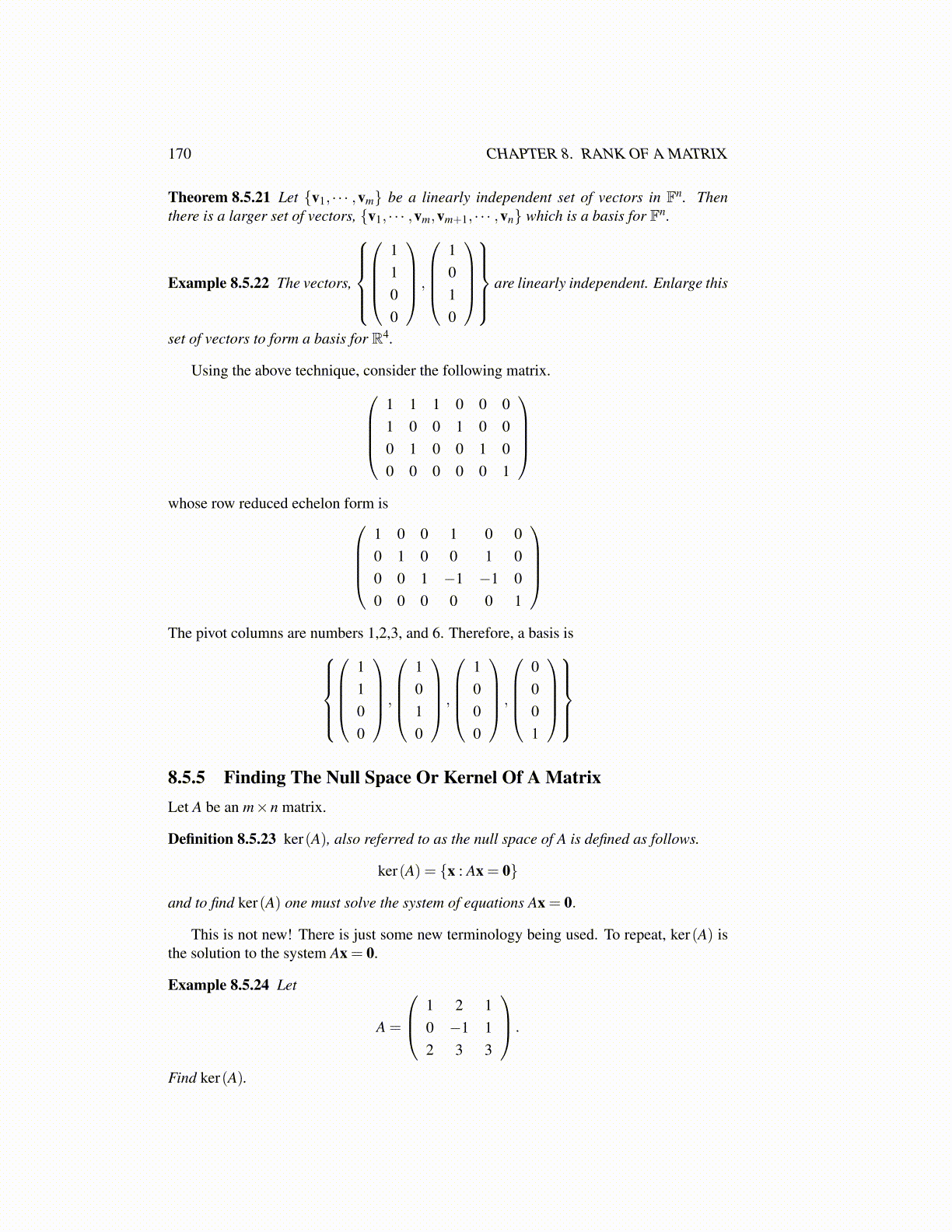
170 CHAPTER 8. RANK OF A MATRIX
Theorem 8.5.21 Let {v1, · · · ,vm} be a linearly independent set of vectors in Fn. Thenthere is a larger set of vectors, {v1, · · · ,vm,vm+1, · · · ,vn} which is a basis for Fn.
Example 8.5.22 The vectors,
1100
,
1010
are linearly independent. Enlarge this
set of vectors to form a basis for R4.
Using the above technique, consider the following matrix.1 1 1 0 0 01 0 0 1 0 00 1 0 0 1 00 0 0 0 0 1
whose row reduced echelon form is
1 0 0 1 0 00 1 0 0 1 00 0 1 −1 −1 00 0 0 0 0 1
The pivot columns are numbers 1,2,3, and 6. Therefore, a basis is
1100
,
1010
,
1000
,
0001
8.5.5 Finding The Null Space Or Kernel Of A MatrixLet A be an m×n matrix.
Definition 8.5.23 ker(A), also referred to as the null space of A is defined as follows.
ker(A) = {x : Ax = 0}
and to find ker(A) one must solve the system of equations Ax = 0.
This is not new! There is just some new terminology being used. To repeat, ker(A) isthe solution to the system Ax = 0.
Example 8.5.24 Let
A =
1 2 10 −1 12 3 3
.
Find ker(A).